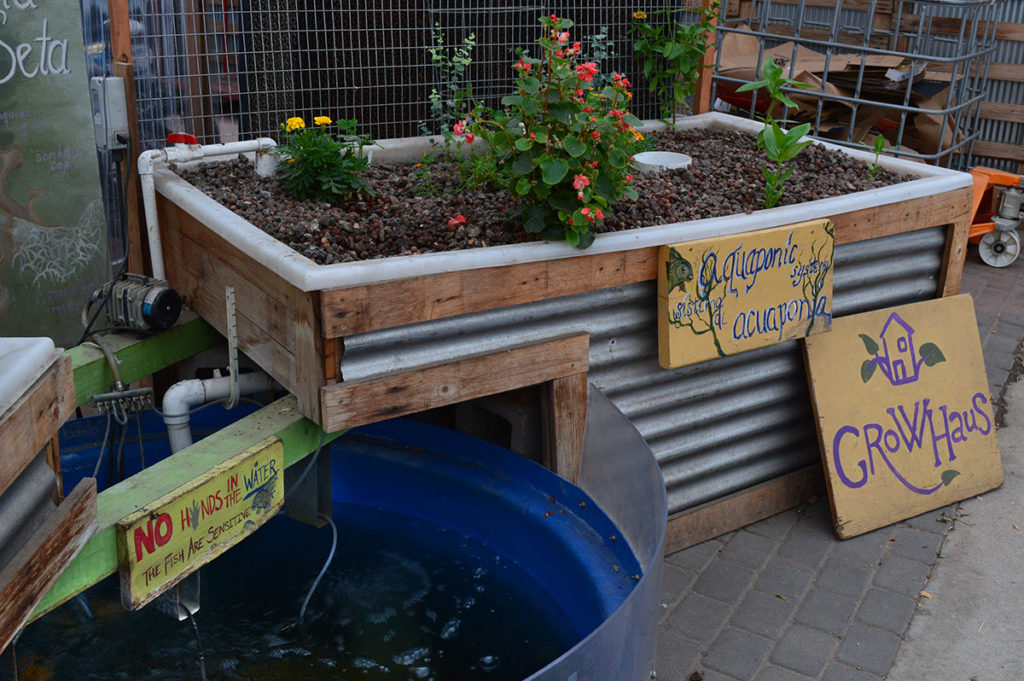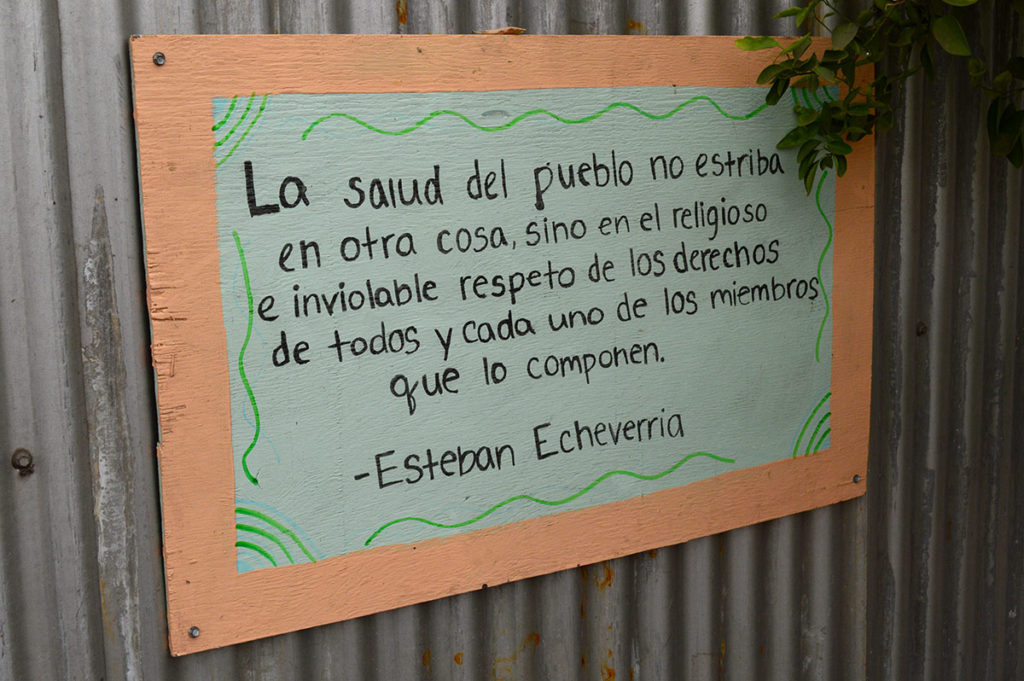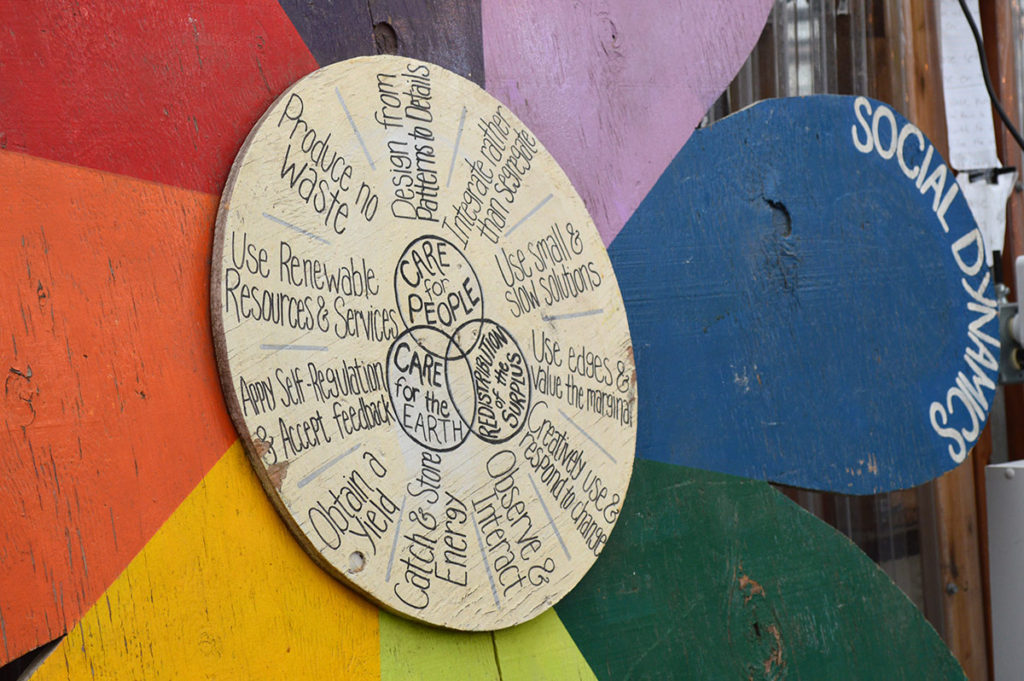Even though it has been horribly hot and humid on the Lot, we have had some overcast days. This allowed me to take pretty okay photos for a Bloom Day post! “What is Bloom Day,” you ask? It’s a day gardeners from around the world post pretty pictures of what is currently blooming in their gardens. Then we all swap links over at May Dreams Gardens. So let’s do this!
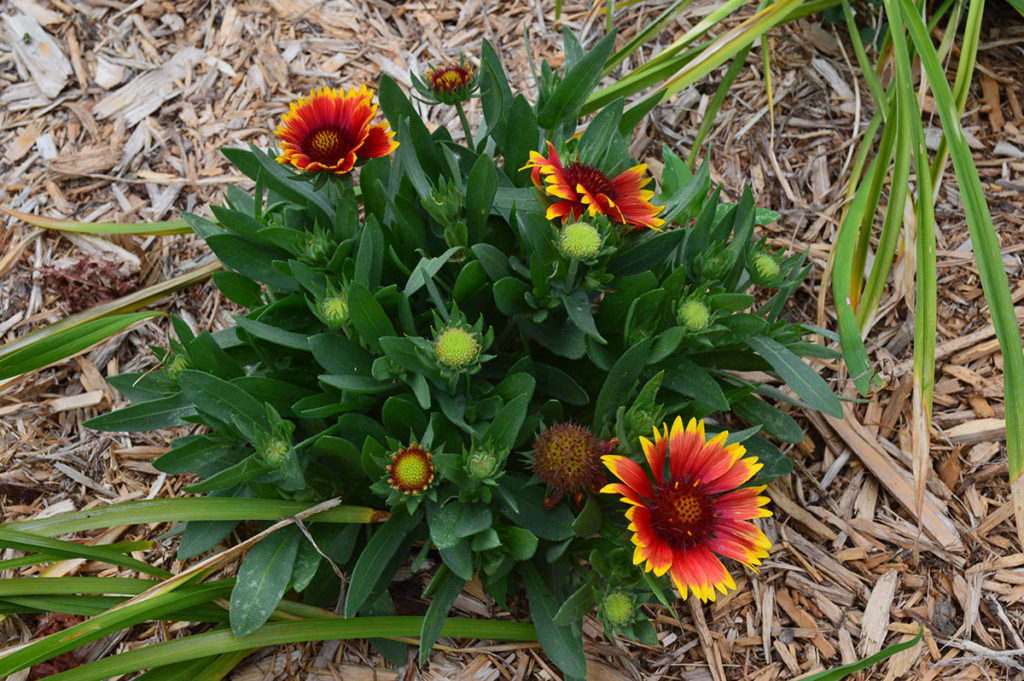
The city removed the failing norway maple in the verge, so this spring I created a new bed. During the winter we have a lot of salt thrown up from the road by the snowplows. So this bed is a bit of an experiment as I’m testing salt-tolerant plants. One of these is now blooming, the blanket flower (Gaillardia ‘Arizona Sun’).

Also up front, the native coneflowers are beginning to open up in the south bed. These blooms attract oodles of pollinators before offering seed to the finches in the autumn. Behind the stand of coneflowers, the little shrubby cinquefoil (Potentilla) is producing its cheery, yellow blooms.

I often wonder if gardening is a gateway hobby to entomology because HOW COOL IS THIS LITTLE BEE? It is quite tiny, as the bloom belongs to the tickseed (Coreopsis) in the front bed. Tis the season for tickseed on the Lot as all cultivars are currently in bloom.
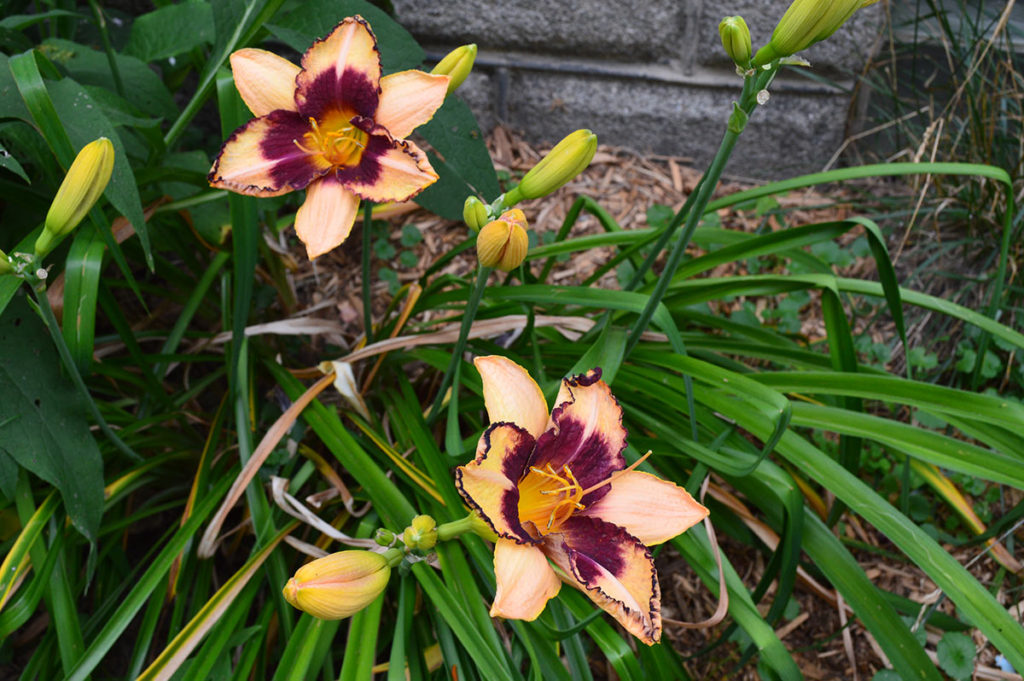
I have to admit, I wasn’t much of a daylily fan until I actually had some on the Lot. These lovely blooms, planted in the southeast corner of the house, are from a friend who was losing a battle with lily-loving deer.
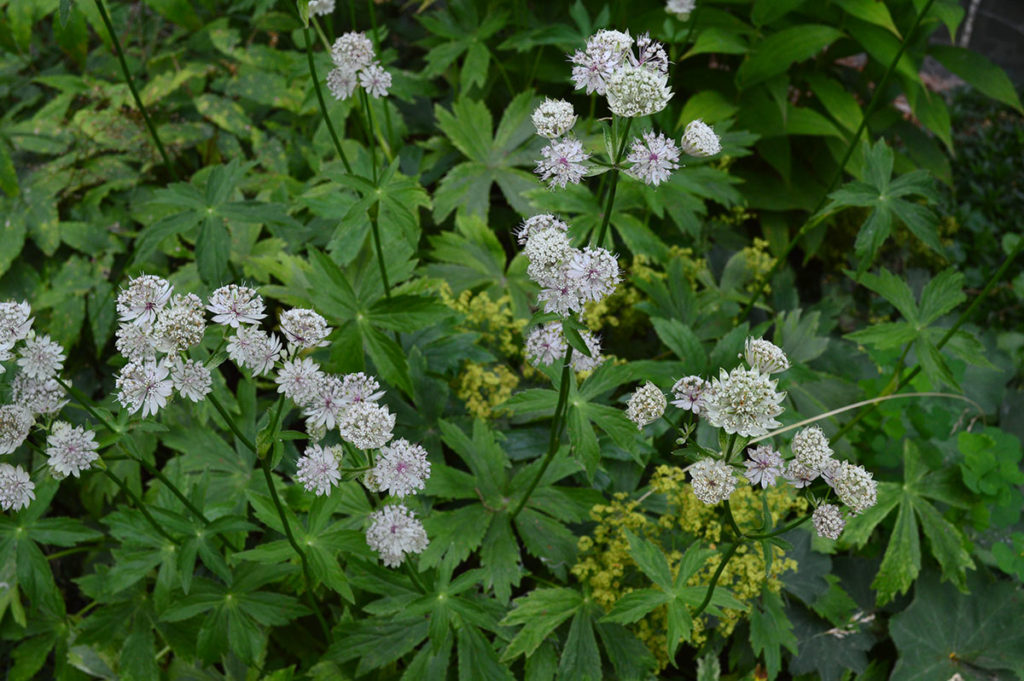
On the east side of the house a bed receiving morning sun and a slight blast of sun in the in early afternoon. Then the shadow of our home passes over the plants and gives them a break from the really hot mid to late afternoon sun. The white bloom is from the masterwort (Astrantia). The yellow blooms are the fading lady’s mantle (Alchemilla).
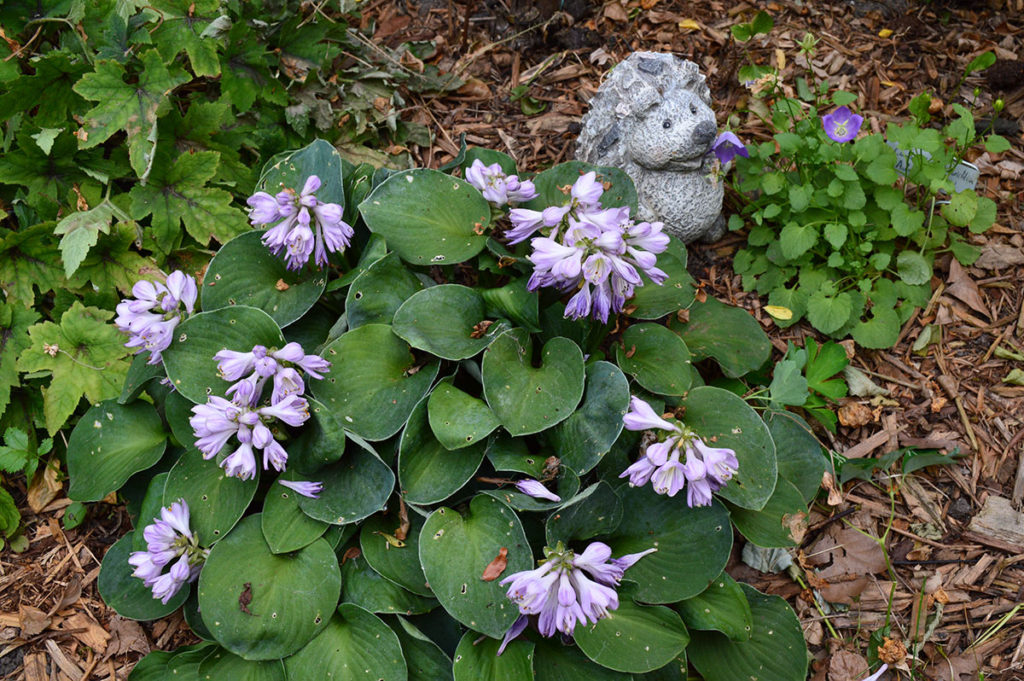
In the back garden, there is a lot in bloom right now. Here’s Fini with a Hosta ‘Mouse Ears’ on the left and a dwarf bellflower (Campanula) on the right.

I’m pretty excited about the white blazing star (Liatris) pictured above. I finally have arranged the planting in the bed correctly so the plant has enough sun to bloom. The purple blooms just now opening are balloon flower (Platycodon grandiflorus). I also learned balloon flower belong to the larger bellflower family.

Also in the back garden, these little coneflowers (Echinacea purpea ‘Butterfly Kisses’) are blooming. They serve as a part of a ‘living mulch’ to help keep the roots of a clematis cool.

The main sun bed in the backyard garden has a whole lotta stuff happening. Both the yarrows (Achillea millefolium) are finishing their blooming. The butterfly weed (Asclepias tuberosa) is in bloom and hoppin’ with pollinators.
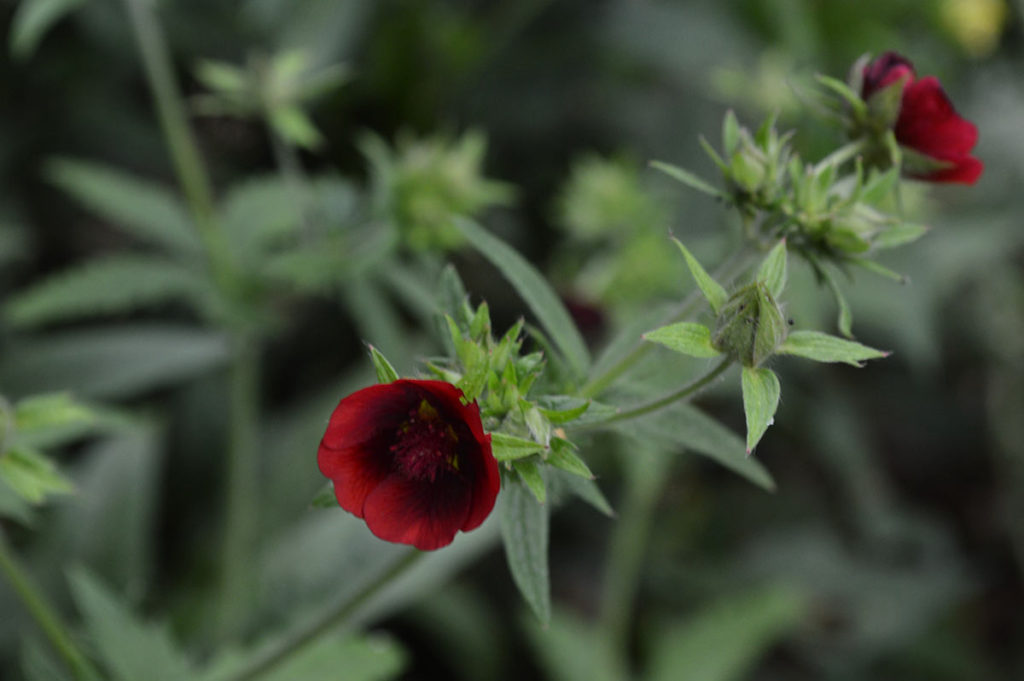
This is another plant I’ve had for awhile and it just didn’t receive enough sun to bloom. It’s now tucked behind the yellow yarrow in the main, backyard bed. Love the blood red bloom on the Himalayan cinquefoil (Potentilla atrosanguinea).

If plants were sorted into Hogwarts houses, this pretty purple clematis would be in Hufflepuff. The clematis ‘Rooguchi’ is a rambling clematis that doesn’t suffocate other plants and provides blooms from about May to late autumn on the Lot.

As mentioned earlier, all tickseed is in boom right now. This is a threadleaf variety planted back by the water barrels and receiving a hot blast of afternoon sun.

Hydrangeas are another flower I wasn’t very keen on when first beginning to garden. However, they are beginning to grow on me. This one is a more compact variety, only growing to 4’x4′.

Also blooming are all 3 varieties of bee balm (Mondarda). This one is from the pollinator bed I created last autumn. It is conveniently located on the south side of our 2 veggie beds. In addition to insects, I’m hoping to see a few hummingbirds this season.
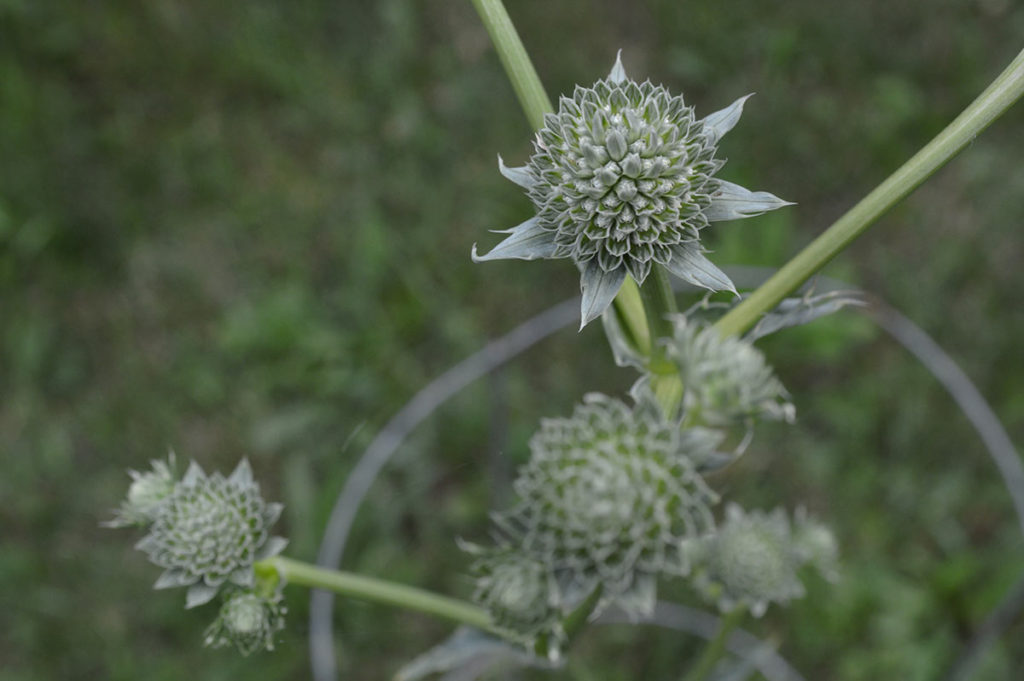
These final blooms are opposite the alley bed. They belong to the rattlesnake master (Eryngium yuccifolium). The plant belongs to the parsley family and is native to tallgrass prairies of eastern and central North America.
I planted the rattlesnake master with the idea of creating a larger bed catered to ground-nesting bees. The area is at the northwest corner of the Lot by the alley, where not many neighbors walk. It would have the sun it needs and also be more safe for the bees. However, the plant selection is dwindling as the maple on this corner matures and the bed gets more and more afternoon shade. I think we can still #makeithappen, it just won’t be as large as initially imagined.
Slowing Down to Smell the Flowers
Something I am trying to consciously do this year is to slow down during these warmer months. Heat makes me cranky, and then it is not so fun to be in the garden. I’m aiming to spend any time deadheading and weeding in the very early morning and the early evening. Otherwise, I am attempting to sit and be still to enjoy the Lot and all the creatures visiting it. I’m seeing insects I’ve never noticed before. With a cool drink in hand, it’s been pretty fabulous so far.
So that is all for July’s bloom day on the Lot! I’d love to hear what is blooming in your garden.



